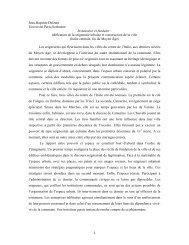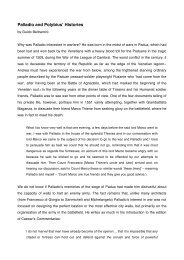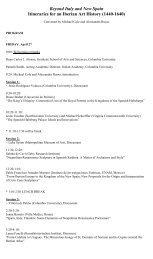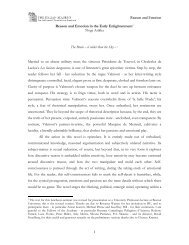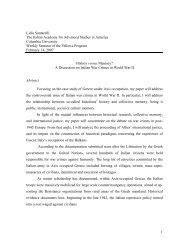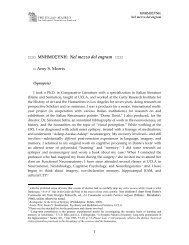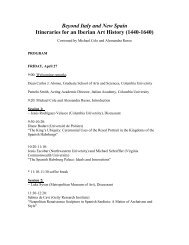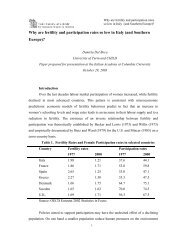2011-2012 - The Italian Academy - Columbia University
2011-2012 - The Italian Academy - Columbia University
2011-2012 - The Italian Academy - Columbia University
You also want an ePaper? Increase the reach of your titles
YUMPU automatically turns print PDFs into web optimized ePapers that Google loves.
sabbaticals and jubilees, as delineated in Leviticus 25. <strong>The</strong>re, God<br />
commands that the land should be worked for six years, and that<br />
in the seventh year it should rest. <strong>The</strong> Levitical passage further commands<br />
that after a period of seven sabbaticals, a jubilee year should<br />
be declared, in which freedom for all slaves should be granted and<br />
all debts should be annulled.<br />
Such cycles were interpreted cosmically in the Talmud. According<br />
to the Talmud, the land that is to rest in the seventh year refers<br />
to the material world, and each year actually represents a thousand<br />
years. Thus, the sabbatical cycle of Leviticus actually represents six<br />
millennia for the existence of the world, with a seventh millennium<br />
as a period of repose. After this seventh millennium, God re-creates<br />
the world anew.<br />
This rabbinic interpretation laid the groundwork for later<br />
philosophical and kabbalistic discussions. Some thinkers connected<br />
this sevenfold patterned idea to the movement of the spheres, while<br />
others connected it to the theosophical hypostases, known in kabbalistic<br />
parlance as the sefirot. Some saw the idea as a positively<br />
regressive idea of a striving to return to purer origins, while others<br />
saw in the idea a progressive move that ultimately cycles forward.<br />
Such discussions were apt to Renaissance re/conceptualizations of<br />
time, and harmonized well with a revived interest in ancients such<br />
as Empedocles and Pythagoras.<br />
My research looked at the development of this idea in the<br />
thought of both Christians and Jews, and their diverse uses of it in<br />
their constructions of time and history. I tracked the Christological,<br />
sometimes polemical usage of this originally Jewish concept in the<br />
writings of prominent Christian Humanists, such as Marsilio Ficino<br />
and Giovanni Pico della Mirandola. I then focused my attention on<br />
the idea as expressed in the writings of Isaac Abarbanel, the illustrious<br />
Jewish exegete and the father of the famed philosopher Leone<br />
Ebreo. I found that Abarbanel takes a rather apologetic stance for<br />
Jewish esoteric ideas of time in the face of contemporaneous Christian<br />
appropriations of this kabbalistic concept. I hypothesize that<br />
this dialectic of polemics and apologetics was one factor leading to<br />
the early modern exotericization, i.e., the revelation to the general<br />
public, of the esoteric lore of kabbalah.<br />
| 54





